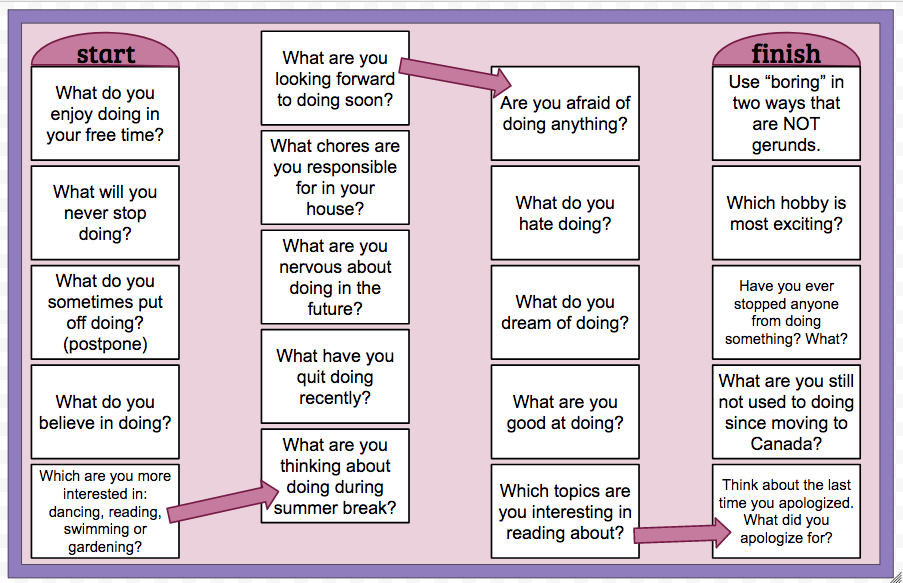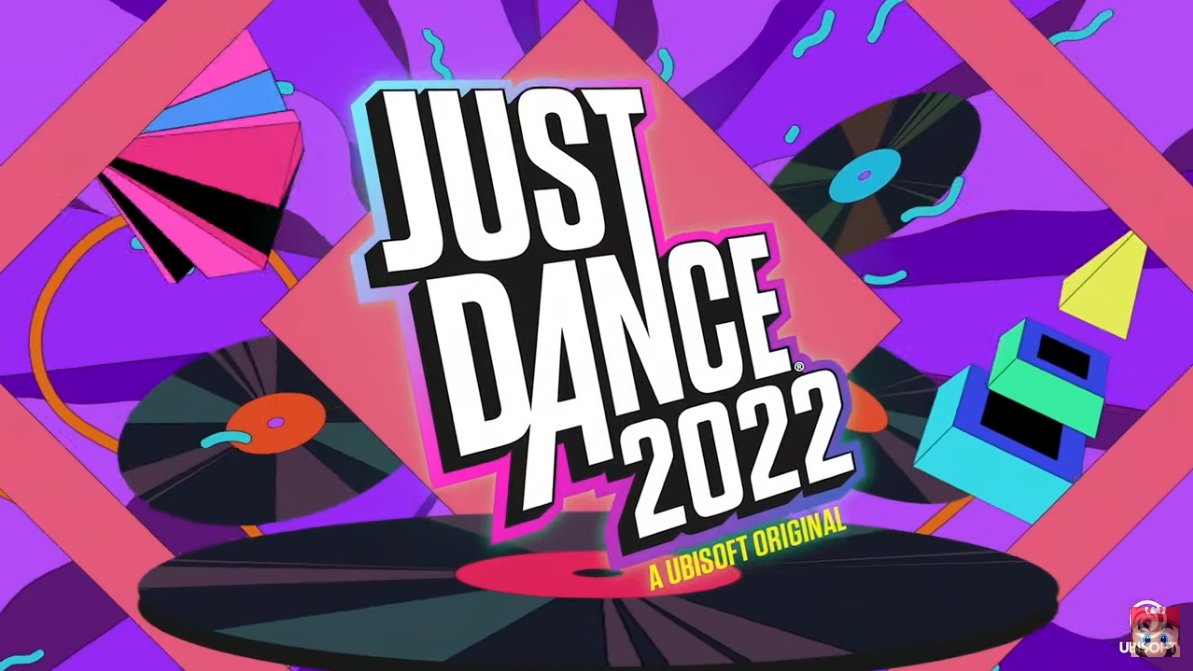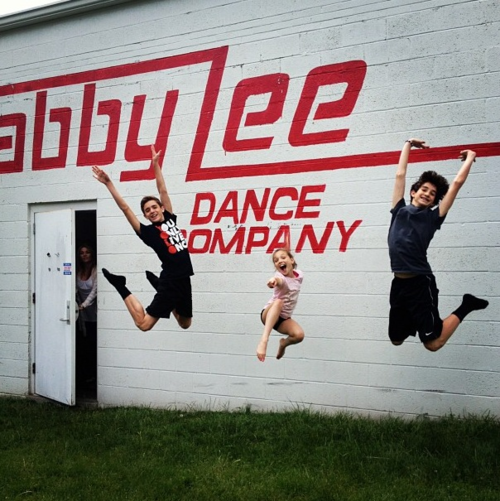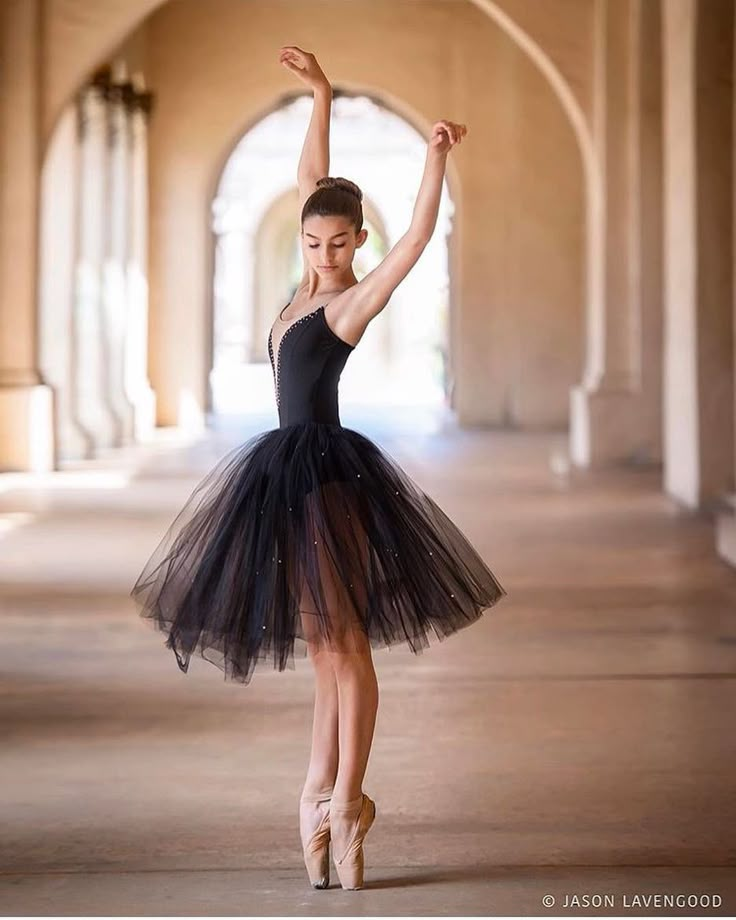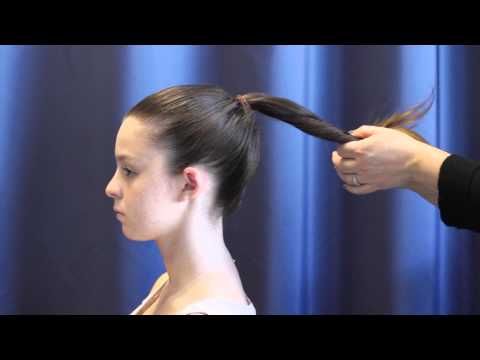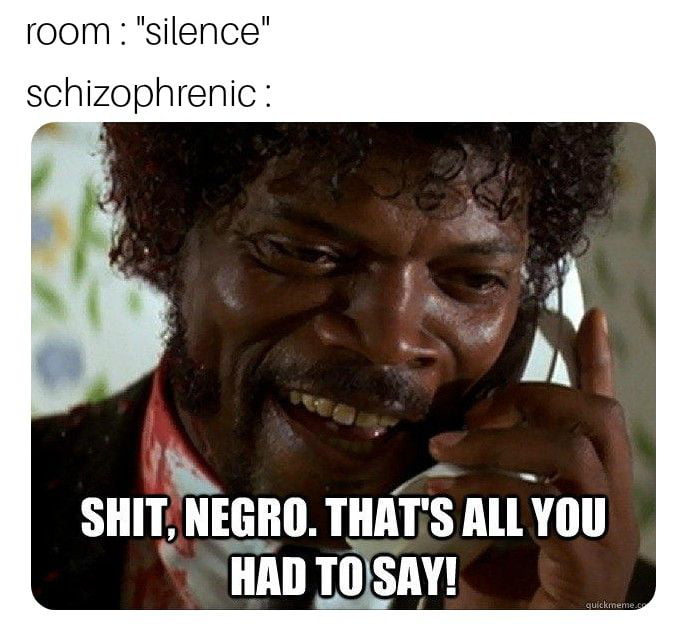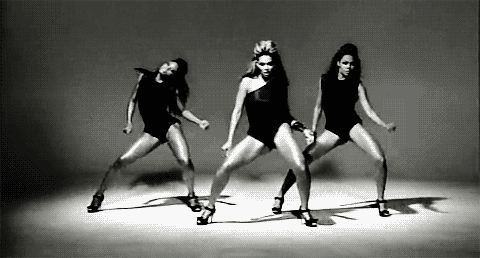How to get more dance students
10 Ideas to increase enrollment in dance studio
Ideas to increase enrollment in dance studio | Simple ways for getting more students!
In this article I’m going to give you 10 ideas to increase enrollment in dance studio, and promote your dance classes!
Before writing this article, I went on other websites to see what kind of advice other people were giving as to how to increase enrollment in your dance studio, and most of the information out there was REALLY outdated.
So, I want to share with you current methods and ideas to increase enrollment in dance studio...
Want us to help you increase enrollment?
If you want to shortcut the time it takes to increase enrollment in your dance studio, click the button below to schedule a free strategy session, and we’ll sit down with you and give you different strategies that you can apply in your studio today!
[CTA]
Here’s a list of ideas that you can use to increase enrollment in your studio.
The ideas at the top of the list are your lowest hanging fruit.
Those are going to be your fast, and easy WINS, so make sure you do those first!
- Send a text message to your previous students
- Email your previous students and leads
- Improve your website’s SEO
- Social media advertising
- Social media organic posts
- Collaborate with other business doing giveaways
- Charity
- Networking events
- Flyers in restaurants
- Passing out business cards
I want you to notice that the first 6 items on the list are all internet based.
The reason for that is simply because the internet allows you to reach people, quicker, easier, and on a much larger scale than any in person method…
If you develop online marketing skills, you can metaphorically blow up your dance studio, and pack your dance classes with students really quickly.
That’s how the largest dance studios are doing it, and that’s why they are able to be so successful!
Ideas to increase enrollment in dance studio | The irresistible offer
Before we dive into the 10 ideas to increase enrollment in dance studio, I want to make you aware of something…
None of the ideas I’m going to give you are going to increase enrollment in your dance studio, unless you have an ‘irresistible offer’.
You see, when it comes to marketing, you always have to keep in mind that people are really busy, lazy, and it’s hard to get them to do anything…
So, in order to make your job of attracting new students easier, a good offer is essential…
So what’s an irresistible offer?
While there’s not a single way of saying what an irresistible offer is, it is a REALLY compelling offer you give to someone that makes them want to take action.
Here are a few examples:
- Get a free class
- Get 10 classes for $10
- Get a 1-week unlimited class pass
- Get 3 months free when you pay for 3 months in advanced.
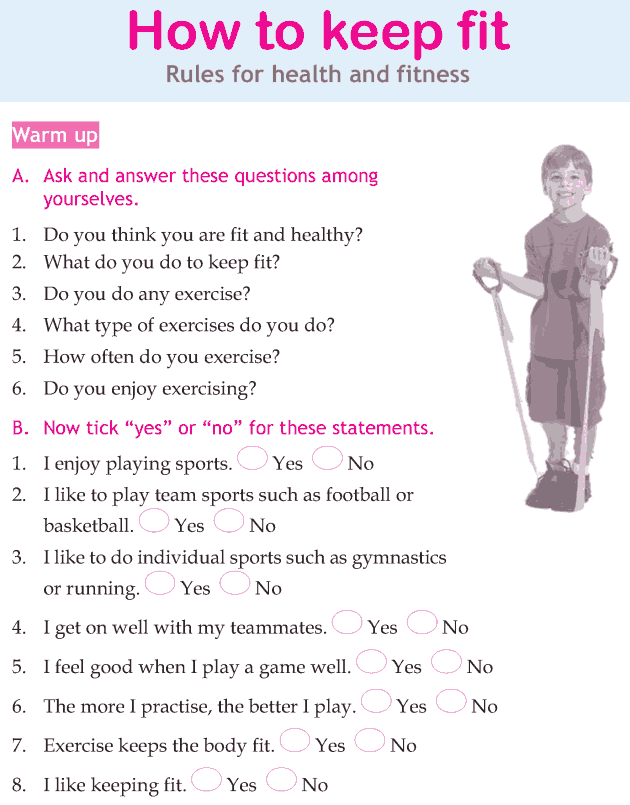
- 2 classes for $2
- 5 classes for $5
- Get a private lesson for $25
- We’ll waive your registration fee
Essentially an irresistible offer is anything that can provide tons of value for either a significant discount or for free!
Now, as we move into the list of ideas to increase enrollment in your dance studio, keep this concept of the irresistible offer in mind because it’s going to make your job so much easier!
Without a good offer, you can have the best marketing in the world, but you won’t see good results from it...
It’s kind of like going fishing without bait. You might get lucky and catch something, but you won’t catch anywhere as much fish as if you had bait…
So, now that you understand that, let’s jump into the 10 ideas.
1. Send a text message to your previous students
If you have been in business for a while, this is possibly the easiest thing that you can do right now to increase enrollment in your dance studio.
Dance studio owners are always looking for NEW students, but the reality is that your database of previous students, and leads is possibly one of your biggest assets.
You see, when you talk to a potential new student, you have to start a completely new relationship with them, and get them to trust you.
On the other hand, people in your database are already familiar with you, they already like you, and trust you, PLUS you already have their contact information!
Just because they stopped coming at some point in the past, it does not mean that they won’t ever do business with you ever again, so reach out to them!
Grab your database and start initiating conversations with these people in your database, and invite them back to the studio with an irresistible offer.
You don’t have to invest tons of time into it...
This is what I would say “Hey Tina, this is Hervin from Latin Dance Movement.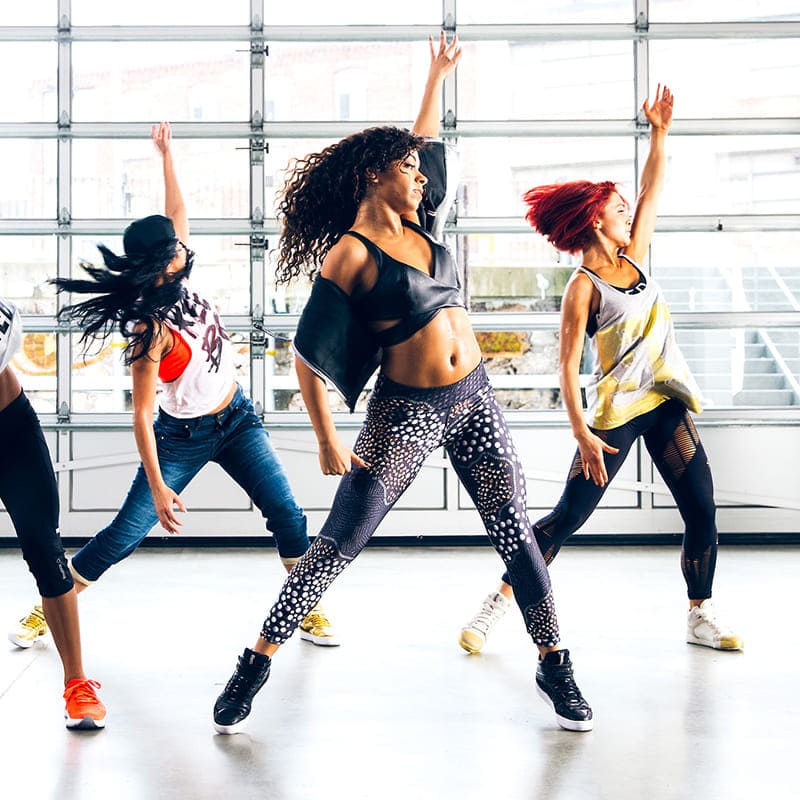 I want to invite you back to the studio! We’re doing a special promotion for our old students, and we’re giving away a few free unlimited class passes, Do you want one?
I want to invite you back to the studio! We’re doing a special promotion for our old students, and we’re giving away a few free unlimited class passes, Do you want one?
Something simple like this doesn’t feel pushy, and it’s an easy way to re-engage those contacts and get them to come back!
Time Saving Tip: We have a software that allows you to import your database, and mass text and start 2 way conversations with those contacts…
If you have a list of a few hundred contacts, or thousands of contacts, this will help you save A LOT of time!
If you’re interested in finding out more, book a free strategy session, and we can walk you through it!
2. Email your previous students and leads
For the same reasons I gave you above regarding marketing to the previous students that you have in your database, I’m going to suggest that you also focus your attention on email marketing!
This is another low hanging fruit that can give you good results with minimal effort.
While email is not nearly as personal as a text message, it still works…
Now, I’m not suggesting that you spend countless hours writing lots of newsletters everyday.
While newsletters can definitely work, they are time consuming, so we’re not going to focus on that right now.
What you need to do right now is take all those emails in your database of past students and leads, and send them a quick email with an offer inviting them back to the studio!
This is very similar to the text message strategy above, except that email doesn’t work nearly as well.
The hardest thing about email is getting someone to open it, so when you’re typing your email out, make sure that you give a lot of thought to your subject line.
Your subject line is what is going to make or break this strategy…
If you have a weak subject line, then not many people will open your email, and they won’t get to see your offer…
On the other hand, if you have a good subject line, then you will get more people to open the email and respond to your offer…
With that said, what makes a good subject line?
One word: Curiosity!
If you can build curiosity on your subject line, you can get more people to open up your email…
So here are a few examples of curiosity driven subject lines:
- “Hey, here’s a invitation for you”
- “Did you miss this?”
- “RE: Registration successful”
Subject lines like this that are meant to build curiosity and get someone’s attention are more likely to be opened!
Now, once you have their attention, and you got them to open the email, what do you write in the body of the email?
The body of the email should be simple.
Tell them you’re reaching out to all your students and doing a special promotion for the next 3 days.
Give them an irresistible offer so that they come back to the studio!
3. Improve your website’s SEO
Over the years that I was teaching dancing, and ran my own studio, SEO was by far the thing that brought me the most amount of students!
You see, once you set up your website correctly, it will allow you to show up at the top on the first page of the google search results, which means that whenever someone searches for dance classes in your city, they will find you first above all the other competitors.
Unlike advertising, SEO is free which means that you don’t have to pay google anything to appear on top of the search results…
Plus, SEO is long lasting which means that it will keep bringing you students in for a really long time!
Once you set up your website is showing up first on Google results, you want to make sure that people see your irresistible offer so that they come to your studio!
If you want to learn more about how to do SEO for your dance studio, start with this blog post here:
“How To Promote a Dance Studio Using SEO – Part 1”
4.
 Social media advertising
Social media advertisingI know lots of people that still think that social media advertising (facebook, instagram ads) don’t work…
In fact, you might have tried running some advertisements in the past, without much results…
The thing is that making social media ads work is not simple, but when done right, social media advertisement is BY FAR, the FASTEST way to grow your dance studio.
While there are too many components to include here in this blog post...
If you want to learn how to do social media advertising for your dance studio…
Start with our blog post here that teaches you how to write social media ads, even if you’ve never written an advertisement before.
“Dance Studio Ad: Recipes For Writing Your Dance School Advertisement”
5. Social media organic posts
Posting on your social media pages, and personal profile can be an effective way of getting new students.
The good thing about this strategy is that it is free, but the downside is that unless you have someone helping you with creating and posting all your content, it is very time consuming!
If you want to be able to delegate this task to a studio staff member, then you need to create a system for when to post, and what kind of content to post about.
One way to do this is to create a content bank, and a posting schedule.
Content Bank
Part of what makes social media posts so time consuming is always trying to come up with new ideas…
Rather than doing that you should create a content bank, which is a place where you are going to store different types of content and group them into different categories...
Here are a few examples of different categories of content:
- Students testimonial
- Students interviews
- A day in the life of a dance teacher
- Success stories about your studio
- Funny memes
- Your “studio family” picture
- Student highlights
- Inspiring quotes
- Fun dance videos
- Videos of students dancing
- Videos of competition
- Videos of packed classes
The reason why you want to have this content bank is because you’ll be able to delegate this task to someone, and give them the responsibility of posting this content to social media.
Once, you have the content bank, then the next thing to do is create a content calendar.
Content Calendar
This is going to be the framework that you follow when posting your content for example:
- Mondays: Student highlights at 1pm, and students testimonial at 6pm.
- Tuesdays: Inspiring quotes at 3pm, and videos of students dancing at 9pm.
- Wednesdays: A day in the life of a dance teacher at 1pm, and students interviews at 6pm.
- Thursdays: “Studio family” picture at 3pm, and videos of packed classes at 9pm.
- Fridays: Funny memes at 1pm, inspiring quotes at 6pm.
- Saturdays: Fun dance videos at 3pm, and videos of competition at 9pm.
- Sundays: Videos of students dancing at 1pm, and inspiring quotes at 6pm.
In this example you can see that you (or your staff) will be posting twice per day.
If you’re going to be doing this strategy of posting content on social media, you need to be consistent, you need to do it often, and you need to have structure!
Last, you want to make sure that at the END of every post, you invite people to take you up on your irresistible offer!
6.
 Collaborate with other business doing giveaways
Collaborate with other business doing giveawaysI learned this strategy from a dentist who used it to increase the amount of patients in her practice really quickly!
The strategy goes as follows, go to your neighboring businesses and tell them that you’re going to run a promotion for your dance studio and are looking to partner up with other businesses by doing a giveaway!
Tell them that you’re going to be putting in all the effort in social media, and they are going to get lots of exposure for their business.
All they would have to do is give something away.
It could be a gift card, it can be a goodie bag, it can be some products, anything of value.
You tell them that you will feature their business name in the post!
Now, go repeat the same thing with as many businesses as you can!
Once you have at least 6 businesses giving something away…
Make a social media post about your giveaway…
Tell people that 6 businesses in their community have come together to do a special promotion.
Tell them there will be 5 prices:
- $50 cash
- $25 cash
- Gift cards
- Special Discounts
- Everyone who participates get your irresistible offer!
Now, in order for people to participate, they have to share the post with 2 people and comment on the post everyday.
Then, you tell them that on the 7th day you’re going to be picking the random winners.
Then after the 7th day, you make big announcements of the winners, and tell them that they have to pick up the prizes at your dance studio, which will give you a chance to promote your dance studio!
Then, that same day you want to direct message everyone who commented on the original post, and invite them to try out your dance studio with your irresistible offer!
This is a creative strategy to use giveaways to not only promote and generate buzz around your dance studio, but at the same time you’re also building good will in the community, as well as good will with your local business owners!
7.
 Charity
CharityThis is another strategy I learned from the same dentist who taught me the strategy above.
Pick certain dates out of the year to do a big charity drive for a certain cause, for example:
- Food to the homeless
- Toy drive around the holidays
- Clothes for children
Then you want to make a post about it on social media, and invite people to participate, and bring donations to your studio…
Whoever brings donation items to your studio gives you an opportunity to talk to them about your dance school, and invite those people to join by giving them an irresistible offer!
8. Networking events
This strategy is simple, and effective, but not very scalable because it requires people and lots of time to do them.
What you want to do is find events that are happening in your community, close to your studio, and offer to teach a free dance class there.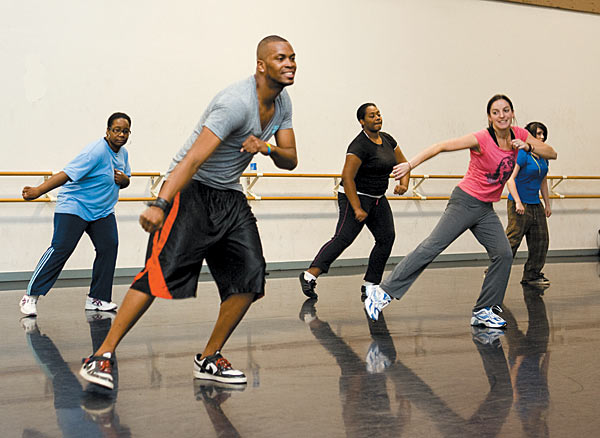
Networking event organizers always love to include some kind of entertainment for their event that will bring people together and help them network, and dancing is the perfect activity to do just that!
Look for places where your ideal clients are, for example:
- Charity events
- Chamber of commerce meetings
- Parades
- Holiday gatherings
- Meetup groups
Keep a calendar with all the events happening around your neighborhood, and write an email to the organizers telling them you want to provide free entertainment, so that you get a chance to promote your studio.
More than likely, they’ll be happy to do that, and they will most likely offer a chance to pass out business cards and put up your flyers!
And of course, make sure that you mention your irresistible offer before the class, after the class, and when you’re talking to people at these events!
9.
 Flyers in restaurants
Flyers in restaurantsTypically, most restaurants have places where you can put up flyers to promote local businesses…
Print out small flyers (typically they won’t let you place huge flyers), and anytime you go to a restaurant around your studio, put up one or two flyers at the restaurant.
Make sure the first thing people see in your flyer is your irresistible offer because not many people pay attention to flyers!
This strategy will not blow up your dance studio with new students, but you will get new students every few months, so it might still be worth printing out $10 worth of flyers for you to do this (don’t spend more than that).
10. Passing out business cards
We’re getting old school here, but business cards can be effective if you’re a social person that hangs out in the community quite often.
What you want to do, when you’re having your business cards printed is that you want to print out not just your name, number, and business name, but you also want to include your irresistible offer on the card.
The reason for that is because you’re giving the people a reason as to why they should take you up on your offer!
By the way, don’t make the mistake of investing more than $10-$20 on business cards. I’ve done that plenty of times, and I always have had to end up throwing a bunch of unused business cards...
$10-$20 should give you plenty of them to carry around in your pocket for a year!
Ideas to increase enrollment in dance studio | Where should you focus on first?
Great job for making it all the way to the end of the article.
At this point you’re probably thinking about how to implement all of these different ideas to start to increase enrollment in your dance classes.
My suggestion is that you first focus on the activities that are going to provide you with the biggest returns for your effort which are ideas 1-4.
If you dial those strategies in, you’re going to have more students than you even know what to do with, so start there!
Here’s a few articles to help you get started on your journey of getting more students:
- “How To Promote a Dance Studio Using SEO – Part 1”
This article will show you how to show up first on the Google search results!
- “Dance Studio Ad: Recipes For Writing Your Dance School Advertisement”
In that article you will learn how to write advertisements that will get you lots of students!
Want us to help you get more students?
If you need help with attracting more students to your studio, book a free strategy call with us and we’ll be happy to help you!
5 Tips to Promote Your Dance Studio and Increase Class Registrations
The end of the year can be hard for dance studios and instructors. Not only are you sad to farewell your students after a year of getting to know each other, you’re also worried they might not come back from the Christmas break.
Not only are you sad to farewell your students after a year of getting to know each other, you’re also worried they might not come back from the Christmas break.
With new independent studios popping up in cities around Australia each year, competition is tough, and standing out from the crowd has never been more critical to survival.
If the thought of an empty classroom is keeping you up at night, check out these six tips to increase enrolment in dance classes and promote your studio long after curtain call.
1. Use social media to promote your dance studio
Using social media isn’t a tip anymore, it’s a given. But having your dance studio on social media and using it effectively are two very different things!
To start, you need to know where to focus your attention. This will depend on who you are targeting (kids, parents, or both?) and what type of content you’re producing.
With social media for dance classes, most of the content you’ll naturally produce will be highly visual, lending itself well to visual platforms such as Instagram and YouTube. You may also want to check out the new kid on the block, TikTok – a short-form mobile video platform which has exploded onto the scene and amassed over 500 million active users (majority millennials) in just a few years.
You may also want to check out the new kid on the block, TikTok – a short-form mobile video platform which has exploded onto the scene and amassed over 500 million active users (majority millennials) in just a few years.
Quick social media tips for success
Quality content matters: Whether you want to write informative articles or produce stunning videos and photos, it needs to be worth viewers attention – who are spoilt for choice these days. A shaky cell phone clip won’t cut it in 2020. There are so many quality content creators out there, ask for help if you need to.
Have a year-round strategy: Your audience won’t appear overnight. Consistency is key to building a loyal following. Having a long-term strategy in place that supports daily or weekly posting and picks up on cultural and seasonal trends will help you build an engaged online community.
Spend wisely: You can have a successful social media presence without spending a cent, but if you want to dig a little deeper, there are paid advertising tools and tricks that help you zoom in on a specific online audience to turn interests into students.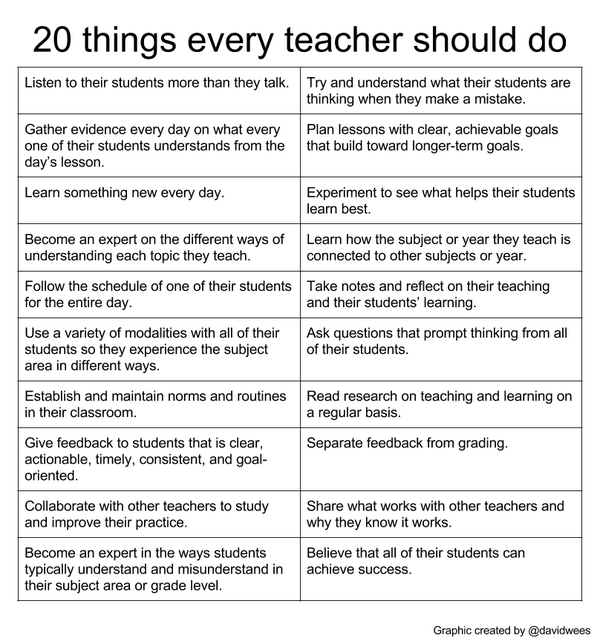
Learn more: Grow Your Business with Paid Social Ads on Facebook and Instagram
2. Engage with the local community
Sure, social media is cool, but nothing beats hitting the streets to connect with your community. Dance studios are positioned well to be big players in the community by connecting with local schools, sports clubs, music events, festivals, fairs, and charities.
More often than not, community festivals and charity events are desperate for entertainment – which is exactly what your dance class has to offer. Trading your skills in return for their audience is a win-win, and helps solidify your dance studio as a household name in the community.
Don’t be afraid to lean on your students to help uncover opportunities. If a bunch of students attend the same school or are affiliated with the same organisation, explore those connections.
3. Look for sponsors and partners
Outside of community engagement, there are heaps of other collaborations you should be looking to take advantage of.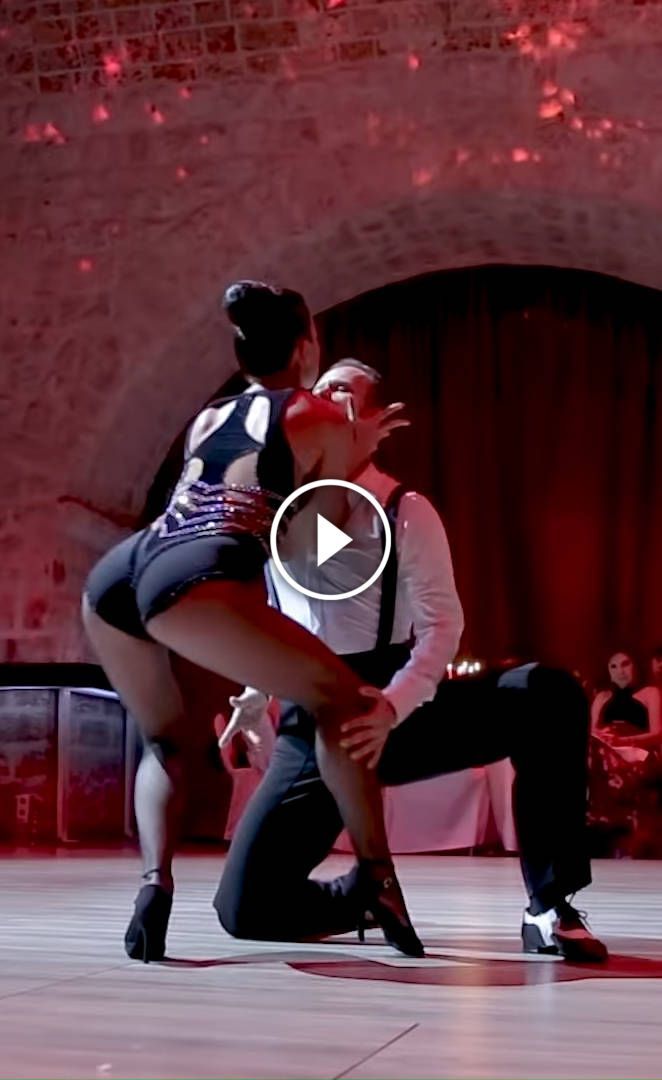 They don’t even have to be related to dancing. Just think of any company who has a similar target audience and aligning values, and then look for opportunities to connect your audiences for mutual benefit.
They don’t even have to be related to dancing. Just think of any company who has a similar target audience and aligning values, and then look for opportunities to connect your audiences for mutual benefit.
For example, a local retailer who appeals to your audience may be interested in sponsoring one of your performances and doing some cross-promotion or free giveaways. If you’re looking to increase student enrolments and offer classes for toddlers and pre-school aged children, look into collaborations with child care centres in your area, e.g. offering their students a discount code or offering to host a trial session.
4. Offer discounts and reward loyalty
People love to save, and well-structured discounts can quickly become irresistible to any audience.
Offering a discount to reward loyalty is a surefire way to make your existing students feel valued and encourage them to enrol in your dance class week after week, year after year.
Similarly, having structured “early bird discount” periods leading up to a performance or registration date is proven to help people make the leap to purchase.
Using a ticketing provider like Eventbrite for your dance classes or showcases allows you to quickly and easily create custom discount codes to inject into your marketing strategies.
5. Host an open day
No matter how detailed your website or social media account is, people still crave a face to face encounter before investing their time and money. Hosting an annual or quarterly “open house” event so that people can try before they buy can do wonders for keeping your dance studio full all year round.
Offer free classes and demonstrations throughout the day, opportunities to meet with dance instructors and of course leave time to mingle over drinks and nibbles. Some people may want to meet the teachers, check out the space or just get a feel for the vibe of the studio.
This is also a great opportunity to team up with local businesses and build your contact list by hosting competitions for tuition discounts or giving away free gifts such as swag bags.
Start selling out your dance studio today
From hosting and promoting events to supporting data-driven partnerships and marketing campaigns, working with the right ticketing partner plays a huge role in helping promote your dance class registrations.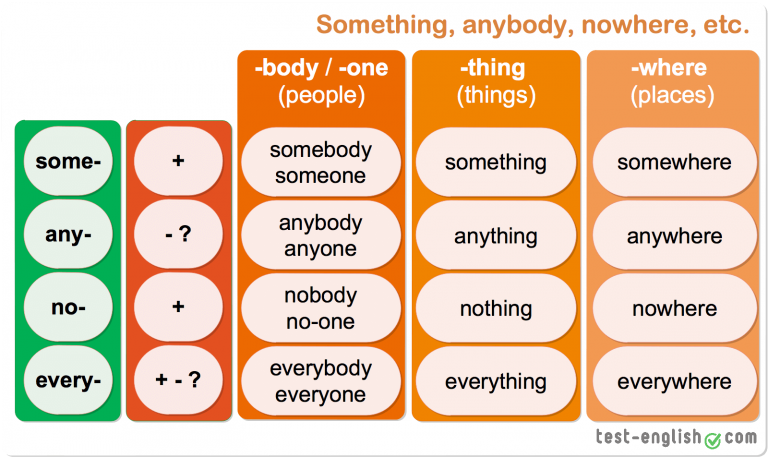
On top of the Search Engine Optimisation (SEO) advantage you get from featuring on one of Google’s most trusted sites, Eventbrite also integrates with major social media and marketing platforms like Facebook, Instagram, YouTube, and Mailchimp, so you can sell tickets and promote registrations directly where your audience is browsing.
Sign up your dance studio today in just minutes.
profitability, work with teachers, promotion, difficulties and mistakes
Irina Malchukova
opened a dance studio twice
Author profile
Eight years ago I opened a dance studio in a small metallurgical town where there was nothing like it at that time.
During its existence, the studio went through several relocations, twice seriously went into the red, but in the end it remained a successful business, and then I sold it. I’ll tell you how everything was, what worked for me and what didn’t work out.
Why I decided to open a dance studio
The story began in a standard way: since childhood, I dreamed of dancing and for a long time persuaded my parents to take me to a choreographic studio.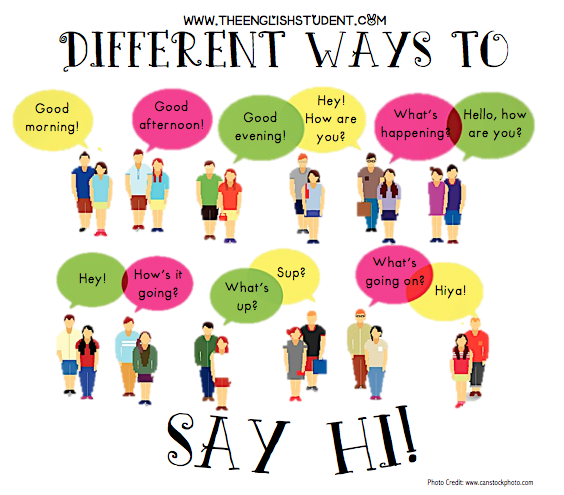
There were no holidays, vacations or birthdays in the studio. It was possible to miss a training session only in two cases, as the coaches joked: he fell ill or died. The rest of the reasons were not considered valid, and it was possible to fly out forever.
Later, I appreciated the strict discipline and exactingness of the teachers. Thanks to them, I can easily control myself, concentrate on any, even unpleasant, business, and bring everything to the end.
This helped a little in business: I could work 10-12 hours a day without days off and holidays.
After graduating from school, I thought that dancing is a hopeless field, so I need to get a different education and build a career. I studied to be an economist and during my studies I managed to work in a trading company, a women's correctional colony and a large network company.
But I was bored doing monotonous activities and being subordinate to someone, I wanted to embody my ideas.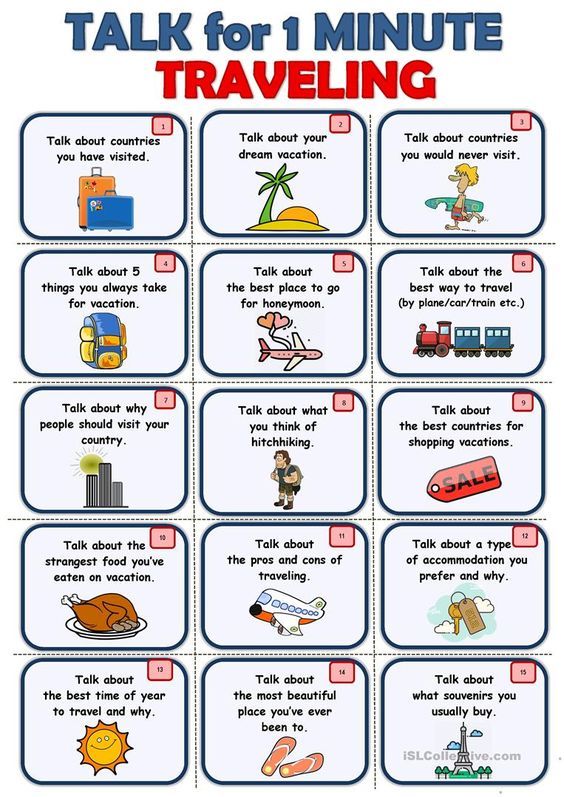 In 2009In the year I decided to take a part-time job as a dance coach, and since then a completely different life has begun. I started working in the then popular areas: strip plastic, stretching, go-go, I also taught regular dances to children and was a group program coach in fitness rooms.
In 2009In the year I decided to take a part-time job as a dance coach, and since then a completely different life has begun. I started working in the then popular areas: strip plastic, stretching, go-go, I also taught regular dances to children and was a group program coach in fitness rooms.
I enjoyed teaching people and putting numbers, inspiring others to accomplish things, raising students, and working with them to achieve results. It's like a coach's job: he gives his whole soul and nurtures champions.
Almost as soon as I started working as a trainer, I wanted to open my own studio. I didn't like the set boundaries and the backward approach to business. In the dance schools where I worked, there were outdated areas that were out of fashion for a long time, such as aerobics. Classes were held without requirements for students and without results: we did not put numbers and did not participate in contests or competitions. There were no opportunities for growth for teachers or students.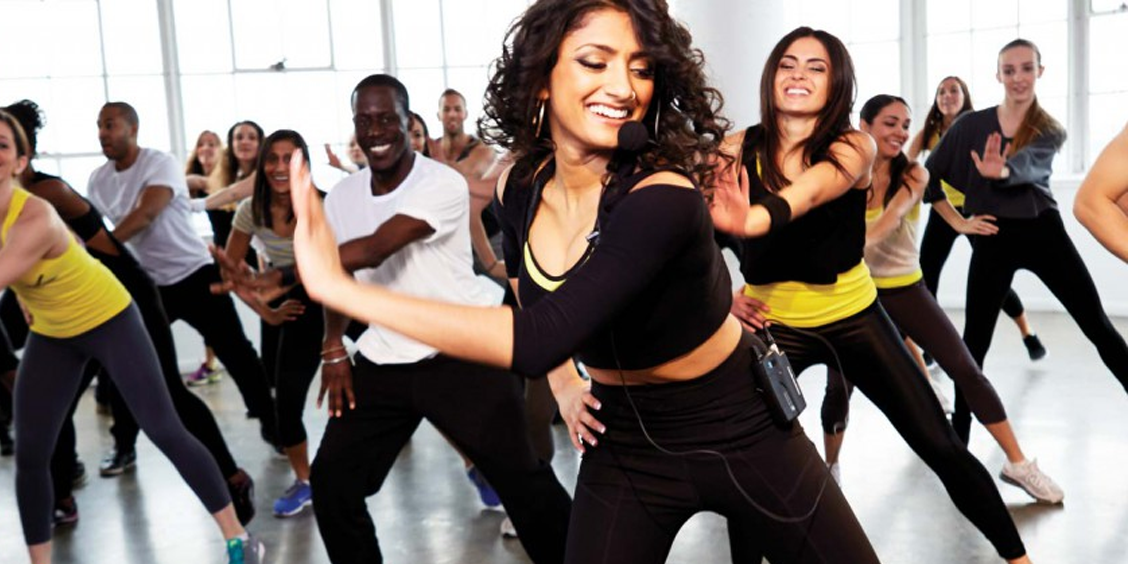
/twerk/
How to start twerking, how much does it cost and why shake your booty at all
The business itself was not service oriented. Schools did not develop, did not innovate - they simply worked for decades according to the old scheme. Several times I came with fresh ideas, for example, to shoot a video clip, but all this was perceived by the management with hostility.
In 2012, I graduated from the institute and received a diploma in economics. I had a choice: to leave for another city, because there were no prospects in mine, or to go work in the dance field abroad, or stay here, but do my own project.
I dreamed of creating a project from scratch on my own: thinking about how to plan and conduct classes, presenting the design of the studio, tracking down the mistakes of others. All these thoughts were constantly spinning in my head, day after day I lived only with this idea, remembering what not to do or what can be improved.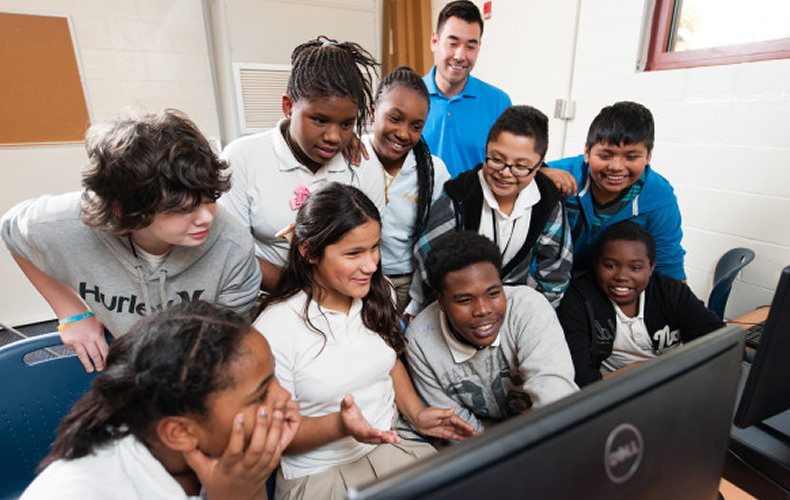
After graduating from the institute, I myself learned about a new direction - half-dance, this is dancing with tricks on a pole. It seemed to me interesting and promising, there was nothing like it in our city. I decided that the idea would shoot and attract people due to its novelty. Three years after I started working as a trainer, I launched my own studio.
What is half-dance
Half-dance is close to strip plastic, but unlike it, the purpose of the dance is not to seduce, but to show acrobatic skills. The movements in strip dance are soft and smooth. And half-dance is the same gymnastics, only not on a beam or rings, but on a pylon. On it, dancers perform circus and power elements.
In my city, metallurgists were not even heard of such a direction, but in Russia and around the world in the 2010s, half-dance just became a trend. At that time, I already had a large client base from dance schools and fitness centers where I had worked before, many students asked when I would open my own gym.
| Pole dance combines elements of choreography, gymnastics, acrobatics | There is also a separate sports direction in the world - pylon sport, which belongs to air power athletics |
Before I opened my studio, I twice studied pole dance in Yekaterinburg - this was the school closest to me where this direction was taught. And there lived a friend with whom I could stay.
The first time I went was in January 2012, and then back in May, before the opening of my gym. I studied for a week every day for many hours, attended master classes. For the first time, the director of the studio gave me a discount on acquaintance, and the training itself cost only about 10,000 R. The second time I spent about 17,000 R: the cost of the training itself increased, and there were more additional expenses for food and travel. Both times I received certificates.
Both times I received certificates.
27,000 R
I spent on additional training in pole dance
There were no competitors in my city at that time. We had only seven dance studios: three taught street dances like hip-hop, breakdancing and locking, the rest were aimed at children, taught modern and classical choreography and ballroom dancing. In fitness clubs, they mainly taught go-go and oriental dances. I decided to take a risk and become the pioneer of a new direction in the city.
First Studio: 3m Ceilings and a Stolen Idea
In May 2012, I started looking for a space to launch the project just in time for the start of the school year. I discussed all the details like equipment, technical issues and the learning process with the directors of the studio in Yekaterinburg when I studied half-dance there.
The room had its own requirements:
- Ceiling height - at least 3 meters, so that poles - pylons can be installed.
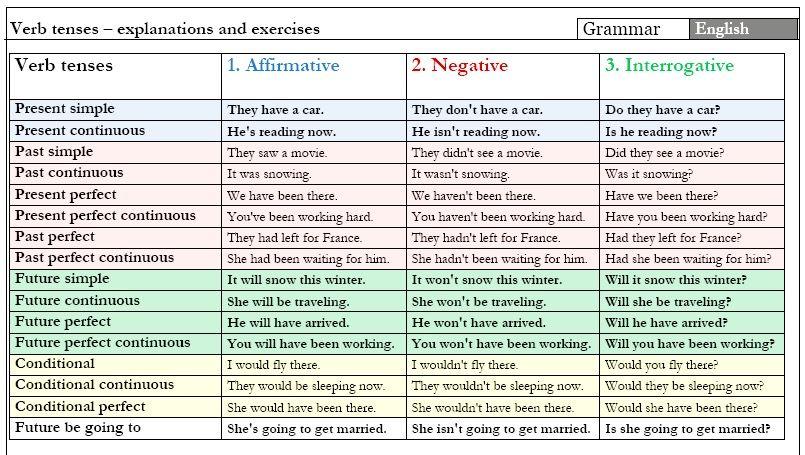
- The ceiling plate must not be hollow, but must be at least 30 centimeters thick. The pylons must withstand a weight of up to 150 kg. If the ceiling is thin, the mount simply won't hold up.
- Rent — up to 15,000 R per month. In my experience, it would be difficult to cover the amount higher with the number of subscriptions, and if something happens, I could find that kind of money to cover a failed month.
/dogovor-arendy/
What should a business consider when signing a lease
Not all landlords agreed to damage the ceiling, the thickness of the ceiling was not always suitable for my needs.
The deal failed with the first hall. Due to the peculiarities of the ceiling, an additional structure had to be made there. The landlords agreed to do it themselves, and I would have paid for the work, but at first they doubled the price, then increased it even more, and then refused to cooperate at all.
A few months later, I found out that they wanted to steal my idea and open a similar studio.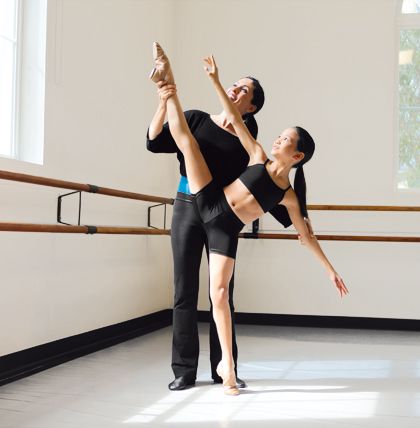
Fortunately, their attempt failed: they could not find the appropriate teachers, because only I had such a certificate and knowledge in the city. But the problem with the hall remained: I was already promoting a group on Vkontakte and recording for the academic year. The students were actively recruiting, but I had nowhere to receive them.
I couldn't just make excuses by telling a story about unscrupulous landlords and kept looking everywhere I could: on websites, in local newspapers, driving around the city, looking for signs about rent.
As a result, the opening had to be delayed for two months: due to the specifics and restrictions on the rental price, the premises had to be looked for for almost six months. A former colleague helped: he learned from mutual friends that I was opening a studio, and his friend was just renting out a small hall.
We have agreed that part of the repair costs will go towards rent. I did a facelift in a few days and bought equipment.
I did the repairs on my own — for example, I painted the walls myself. If it was necessary to attach pylons and arrange heavy furniture, then she called for help from familiar men. They spread linoleum on the floor and nailed it in places.
Pylons are installed quite quickly if there are no problems with the ceiling and floors: you need to drill a hole, attach the pylon, level it, and that's it. Detailed installation instructions are always attached to the pylons. We set up the first pylon in 2-3 hours, the rest were faster.
An important part of the cost for a dance studio is mirrors. They were made in a local company in my city to order. I ordered one-piece large mirrors to the floor. Due to the large size, there were difficulties with transportation: a special vehicle with equipment for transportation was needed - plastic windows are usually carried in such vehicles.
They could not be moved or installed by one person, and they could hardly fit into the aisle. Plus, there were difficulties with fixing: if the wall was not perfectly even, then any slightest deviation could be seen in the mirror - at the joints, in reflections.
Plus, there were difficulties with fixing: if the wall was not perfectly even, then any slightest deviation could be seen in the mirror - at the joints, in reflections.
But the mirrors themselves were excellent, and I then transported them to new studios, breaking the part along the way and ordering new ones. As a result, my friends came up with the idea of custom-made huge plastic frames, like for plastic windows, where we inserted mirrors. So they were easier to transport and install.
For a pylon, a hole is drilled in the ceiling slab and fixed with screws. If the ceiling is not strong enough, the pole may come off during the trick and cause serious injury. Source: Pole4you This is what the studio looked like after the repair - huge mirrors were made to order at the local production At the same time I registered an LLC, I was the sole founder. I chose LLC because I planned to open branches in other cities - it seemed to me that it would be easier to do this than with an individual entrepreneur.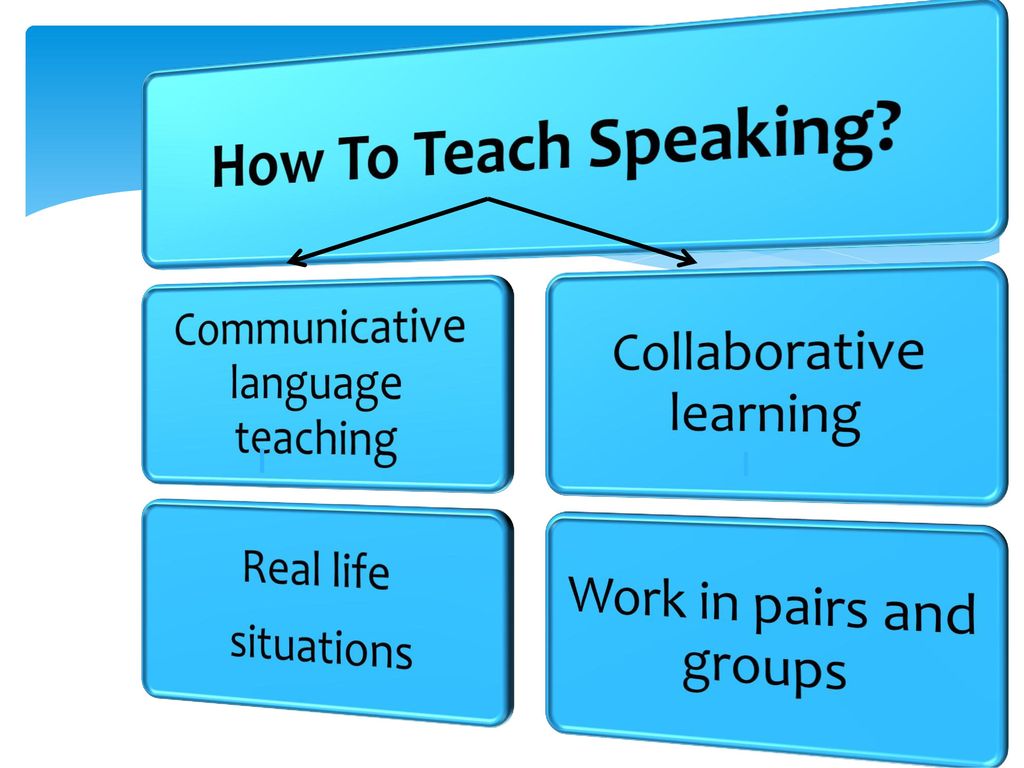
By the way, it would be better if I opened an IP. The LLC was not useful to me later, I had to close it, and this is more difficult than an individual entrepreneur. In the second hall, I had to negotiate with the landlord so that he would give me a legal address. He reluctantly agreed, and I had to pay for it. The LLC also needs to submit a large number of reports, but I did not have the necessary accounting knowledge. Until I hired an outsourced accountant, there were delays in submitting reports and fines.
/ooo-na-divane/
How to register an LLC from home
I opened the studio at the beginning of November. I was ashamed in front of the students, but they waited and almost all of them came.
To open a studio, I took out a loan, so after the opening, most of the proceeds went to payments to the bank - 20,000 R per month. For the entire time the business has been running, I have taken several loans, on average, 30,000-50,000 R for a period of 3 to 5 years.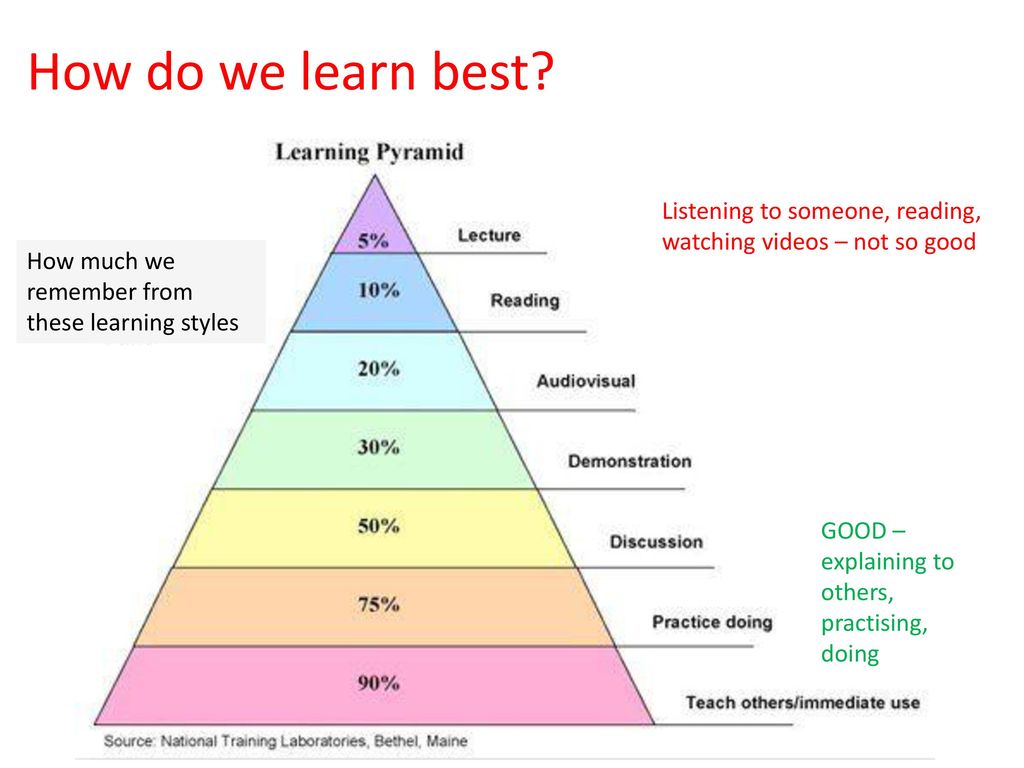 The total amount of all loans was 200,000 R.
The total amount of all loans was 200,000 R.
Expenses for opening a studio in 2012 — 200,000 R
| Equipment: mirrors, pylons, fixtures | 95 000 R |
| Cosmetic repairs: wall painting, flooring | 53 000 R |
| Training and advanced training before the opening of the studio | 27 000 R |
| Bathroom renovation | 14 000 R |
| Music center, locker room furniture, hangers at the entrance and other small items | 11 000 R |
Equipment: mirrors, pylons, mounts
95 000 R
Cosmetic repair: wall painting, floor covering
53 000 R
Training and advanced training before opening the studio
9000 000 RSanuzla repair
14,000 R
Music center, locker room furniture, hangers at the entrance and other trifles
11,000 R
How much did I earn
The first studio was small — there were only three pylons, and I could not teach more than an hour six or seven people. This allowed the studio to earn an income of about 65,000 R per month.
This allowed the studio to earn an income of about 65,000 R per month.
There were two main sources of income: group and personal lessons.
Group lessons were by subscription only. The most popular, for eight classes a month in the evening, cost 1800 R. Evening is considered the most profitable time, because more people come. There was a small discount for the daytime.
Personal lessons were by subscription and one-time. A subscription for eight classes cost 3000 R, a one-time visit - 500 R. At first, the income from personal classes was small: with group classes, I did not have time to take more students. When more teachers appeared, I could only go to personal classes, and the revenue from them reached 30,000 R per month.
A regular waste was the purchase of alcohol: it is rubbed on the surface of the pole to remove dirt and sweat and improve adhesion to the skin. Alcohol had to be bought in canisters from doctors I knew - we needed a concentration of at least 70%, and this is not for sale in the public domain. It took 2000 R per month.
It took 2000 R per month.
The largest turnover was from the spring of 2013 to the spring of 2014: 140,000-170,000 rubles. And the largest net profit was about 60,000 rubles.
Revenue for December 2012
| Subscription for 8 lessons | 27 000 R |
| Subscription for 12 lessons | 12 500 R |
| Subscription for 16 lessons | 12 000 R |
| Day group | 8000 R |
| Personal lessons | 5000 R |
| Total | 64 500 Р |
Subscription for 8 lessons
27 000 R
Subscription for 12 classes
12 500 R
Subscription for 16 lessons
12 000 R
Day group
8000 8000 °
Personal classes
9000 5000 5000 °64 500 500 500 500 500 500 500 500 500 500 500 500 500 500 500 500 500 500 500 500 500 500 500 500 500 500 500 500 500 500 500 P
Studio expansion: moved four times in five years
The studio lasted only six months in the first building: the landlord changed plans and we had to move out.
I already wanted to move out myself, because the room was small and I could not teach more than seven people in an hour. To support myself, support the studio and repay the loan, I needed to sell 20-30 subscriptions a month. If I bought less, I no longer had enough money for all expenses. It was necessary to expand and increase income, and for this, another room was needed. In just five years, we moved four times - each time to a new area of the city.
In March 2013, I took away the mats and the music center and moved to another room - almost three times bigger than the old one. I had to take out a loan again, because the old pylons did not fit in height. For 150,000 R I bought five new pylons and changed the flooring. The move cost 300,000 R, including rent for two months.
300,000 R
I spent on moving
There were no problems with buying poles: even then in Russia there were several specialized companies that produced professional poles for dance studios. The best and most famous is located in St. Petersburg - Pole4You. You place an order on the website, choose a convenient delivery method - I had "Business Lines" - and they send it. Two weeks later I received the pylons.
The best and most famous is located in St. Petersburg - Pole4You. You place an order on the website, choose a convenient delivery method - I had "Business Lines" - and they send it. Two weeks later I received the pylons.
| Lesson in the second hall after renovation. The floor had to be re-laid - it should be soft high-quality linoleum so that the students do not hit their knees and do not get hurt when they fall | This is the third hall we have moved to. There I seriously invested in repairs, laid carpet on the floor, repaired the locker room and shower for students and teachers |
 In the third hall, they made a bright panel on the wall. I was the first in the city to start teaching half-dance, so this particular dance is depicted on the panel
In the third hall, they made a bright panel on the wall. I was the first in the city to start teaching half-dance, so this particular dance is depicted on the panel The rent of the premises was three times higher than the previous one, the communal apartment was included in the price. In addition, you had to pay for security. All together it cost me 50,000 rubles.
There were no cheap premises, so the choice was either to continue or give up the dream. I decided to take a risk, and the risk was justified: the business grew rapidly. After the move, we already taught 10-12 students per hour and earned an average of 150,000 R per month.
How I built my work with teachers
I recruited teachers from former students: I chose those who had the potential for this or that direction, loved classes and knew how to communicate with the team. There were three main teachers, I took one or two more for additional directions like go-go.
She tried to make the work of teachers a pleasure: she gave salaries higher than the market, bonuses, paid for their education and advanced training, gave part-time jobs. The average salary in the city for teachers at that time was 2500-4000 R per month for 2-3 lessons per week. I paid 7000-8500 R, if I gave out a bonus, then it came out about 10,000-11,000 R. I gave out bonuses to those who attracted new students to their classes and, most importantly, kept new students. Or those who came up with something interesting like New Year's contests.
The average salary in the city for teachers at that time was 2500-4000 R per month for 2-3 lessons per week. I paid 7000-8500 R, if I gave out a bonus, then it came out about 10,000-11,000 R. I gave out bonuses to those who attracted new students to their classes and, most importantly, kept new students. Or those who came up with something interesting like New Year's contests.
Teachers went to Yekaterinburg to improve their qualifications. It cost me 500-3000 R per person. I myself taught until the fall of 2013, and then I decided to leave only to manage the studio, since classes took time and effort.
Promotion: mostly word of mouth worked
The very first I had a group in VKontakte — I started to recruit the first students even before the opening of the studio from former students. When I started to develop the group, I asked my friends to join it and make reposts, every day I posted posts, photos and videos to attract people. About a year later, the group had 1000 subscribers, and since 2013 it began to develop actively.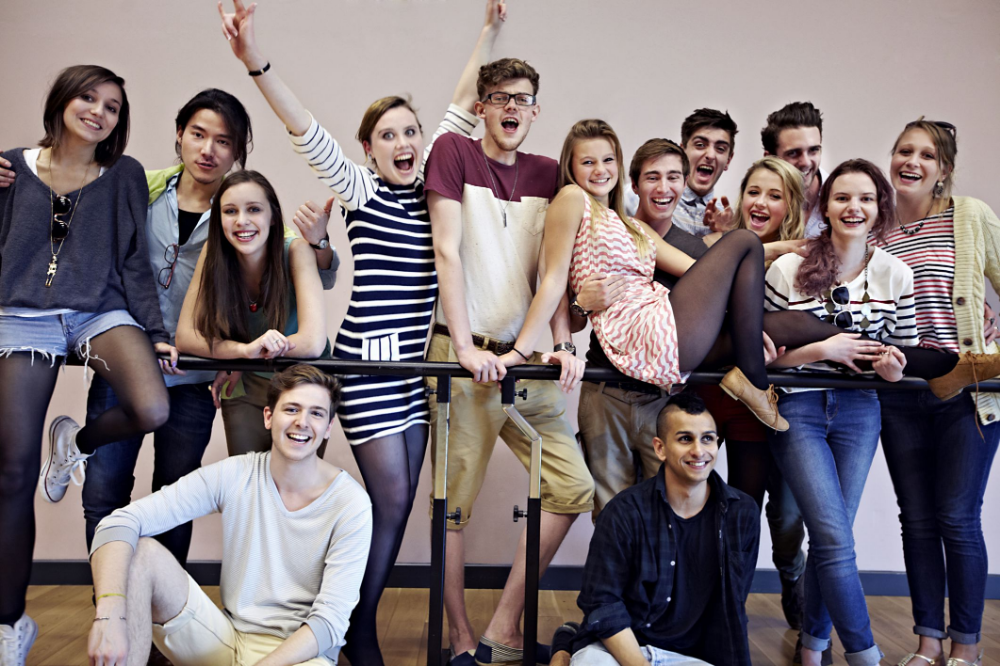
The popularity of the project was also influenced by the uniqueness of the project: half-dance in the city was a new exotic direction, people from the media sphere became interested in this.
/marketing-ads/
Basics of marketing for business: advertising
My main clients were girls 25-35 years old with an average income and a little higher.
Here's what I used to promote.
Regularly updated accounts on Vkontakte and Instagram. I photographed a large, beautiful, spacious hall with high pylons, people reacted and signed up for classes. We wrote about the studio every day, posted posts, asked all our acquaintances and friends to tell about us.
Involved in the promotion of the community of teachers. In the new premises, I already taught with three coaches, whom I found among former students. They posted recruitment announcements for groups on their social networks, made photo sets and videos for Instagram. Friends of acquaintances came - it turned out such a word of mouth.
Friends of acquaintances came - it turned out such a word of mouth.
Made a website for the studio. It cost about 13,000 R. I made a beautiful clip on the main page, added photos, information about teachers and a class schedule. After the site appeared, calls began to arrive twice as many.
13,000 R
I spent on the site
I invited photographers and cameramen to work on a barter basis. The direction was new in the city, so they were interested in working with us free of charge. Sometimes they did provocative reports like "Half-dance: striptease or art?", but in any case, publications brought us fame. There were about 15 permanent photographers.
Photos from the performances of studio teachers at concerts and events. These are dances on canvases. Photo: Dmitry Kaiser| An example of a photo shoot that we came up with with a photographer. Photo: Dmitry Kaiser | For them, it was new and unique content that no one else had done in the city.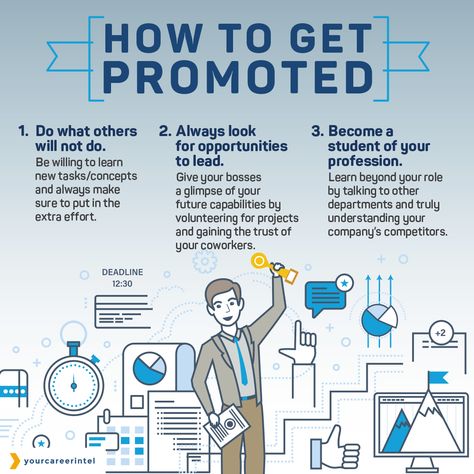 Photo: Dmitry Kaiser Photo: Dmitry Kaiser |
Placed ads about the studio. I have published on local sites, 2GIS, Flampe and Avito. She advertised several times through Yandex Direct. Local sites and 2GIS did not give any results, but promotion through Yandex Direct and Google Ads worked.
I was engaged in promotion, at the very beginning I asked a friend to figure it out and help set up advertising. Usually, new campaigns were launched before the season - at the end of summer to attract students for the new school year, and at the end of winter to attract people for the spring. The advertisement lasted 1-2 weeks, the average budget per campaign was 7000-15000 rubles. We did not have to negotiate with them: they themselves found out that a new dance style was being taught in the city, and they wanted to talk about it.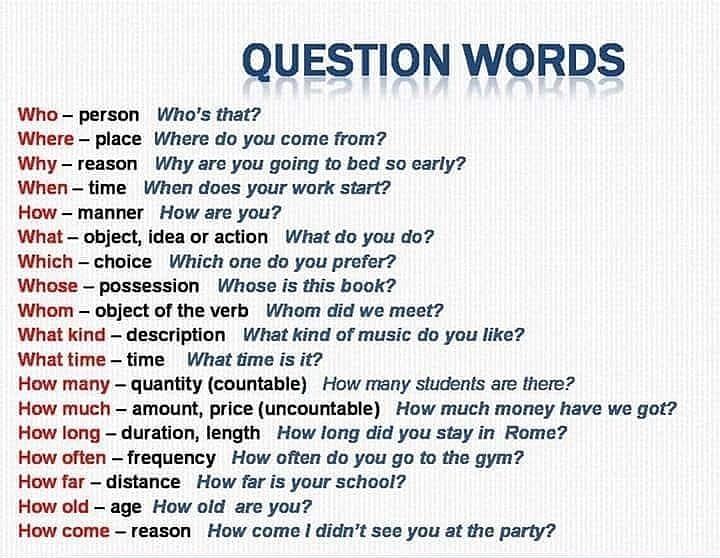
Development of the studio: new directions in the city
Everything was spinning at breakneck speed. Soon I brought new dance styles to the city: aerial gymnastics on canvases and acrobatics on the ring. This trend had already begun in Yekaterinburg, and I knew that it would soon come to our city. It was necessary to have time to be the first.
At first, all this was not in demand, because it was hard and difficult for the students. It is very painful to practice on the ring and canvases: after the lesson there are huge bruises from hoops and burns from the fabric.
Imagine: you are hanging in the air and you are being held by a rag digging into your body.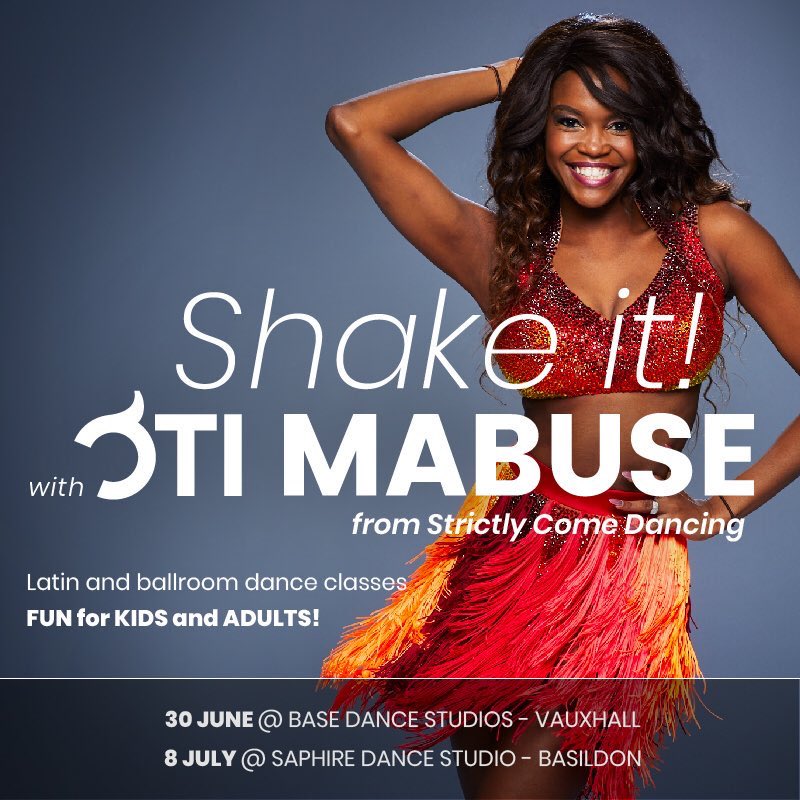
But then the direction unfolded: beautiful photosets and clips with dances on canvas appeared in all social networks, competitions began to be held in cities, dance studios made enticing advertisements.
I was the first to develop this direction in the city, so the students immediately came to me. Once I organized a competition to draw attention to dancing on canvases: for the best photo on canvases, I gave a subscription to eight classes in the studio.
From the outside, these dances seem dangerous, but there have never been any accidents in my classes. Classes are necessarily held with special mats that soften the blows if someone suddenly falls. Teachers are trained and know how to avoid injuries. Before the start of classes, my clients got acquainted with the instructions for safety rules and signed it. Nevertheless, adults understood their responsibility, no one took risks once again.
For classes on canvases and rings, you need to buy additional anchors - these are such fixtures in the ceiling - and soft mats on the floor for safety In general, there are few incidents in this area. I heard only about one case: in Yekaterinburg, a girl flew off a pylon and broke her arm. But it was a pylon of a different design - a portable one that stands on the podium. It is less stable than a pylon bolted to the floor and ceiling in a studio.
I heard only about one case: in Yekaterinburg, a girl flew off a pylon and broke her arm. But it was a pylon of a different design - a portable one that stands on the podium. It is less stable than a pylon bolted to the floor and ceiling in a studio.
I first looked for teachers at the local circus school, we have a pretty strong one. But we worked with them for a couple of months and did not agree, so I sent several students to study in Yekaterinburg at my own expense - so that they could conduct classes.
44,000 R
I spent on the introduction of a new direction
The introduction of new directions cost 44,000 R: 38,000 R was spent on canvases, anchors and rings, another 6,000 R were spent on teaching teachers.
Children's dance school and missed grant
My students and parents of former students regularly asked to open dance classes for children: variety dances, stretching, modern choreography.
This would help expand the business and reach a different part of the audience.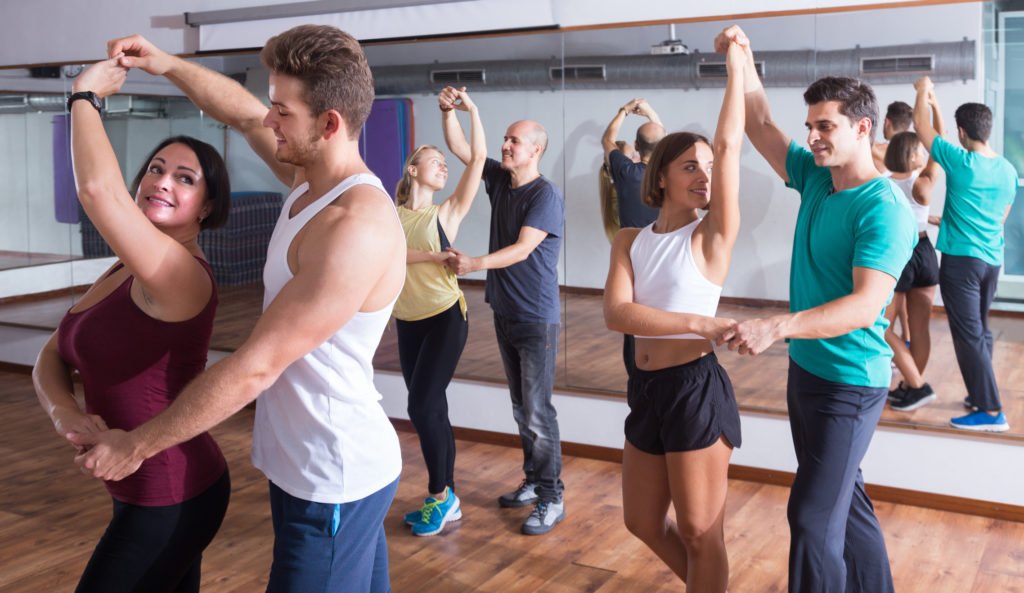 I knew for sure that the project would be successful: I had already worked as a choreographer with children aged 6-7, I had a reputation and potential clients.
I knew for sure that the project would be successful: I had already worked as a choreographer with children aged 6-7, I had a reputation and potential clients.
There was no free money to create a children's school, so I decided to look for a grant and found a suitable one - the competition of the Entrepreneurship Fund. To participate in it, one had to take courses and defend a business plan.
I did not learn anything new during the courses, since I already had an economic education. The next step was to write a business plan and submit an application. I asked for money not just for a children's school, but for business development.
I collected a package of documents: statutory documents, certificates of no debts to government agencies, a certificate of completion of courses, several questionnaires from the foundation itself, a business plan and checks confirming the costs of the project - 15% of the requested amount.
300,000 R
I got to the children's dance school
As a result, I won the competition and received 300,000 R.
Everything went well, but again there were difficulties with the premises. I needed a hall with an area of 50 m², and these cost 50,000-100,000 R, and not in the center, but on the outskirts of the city. I couldn’t take on such obligations and pay more than 100,000 R for the premises of an adult and children’s studio: I had loans, and if something went wrong, no one would help me.
I tried to search for premises through state auctions and the city administration, I turned to the mayor for help. She offered to do free classes for children from orphanages or large families. But no one came towards me. We have a small city, culture and education are not particularly developed here.
There are factory workers in my city who prefer to drink and watch TV after work.
It was not accepted to get involved in something or have a hobby, so it is difficult to develop in a creative environment.
As a result, the school could not be opened. I spent a grant on an existing studio, and the foundation accepted it, because I originally asked for money to expand and develop the business. So the grant was well spent.
I spent a grant on an existing studio, and the foundation accepted it, because I originally asked for money to expand and develop the business. So the grant was well spent.
Despite the history with the grant, 2014 was a successful year: for the first time we held the first major dance event in the city — a pole dance competition. At the same time, it became possible to open branches in other cities: I found two halls and a representative, and I could launch three schools at once. But she was afraid of responsibility and put it off for the future.
/pozhaluite-grant/
How I got a grant for 100,000 R
I was afraid to carry such a large financial burden on my own, especially the simultaneous payments for four rents. I also wouldn’t have had enough time to manage all the studios myself, and there was no one to delegate.
If I created a network of dance studios, it would raise the status of the project, bring in additional income and allow the sale of the franchise to start. In the future, I did not have such opportunities.
In the future, I did not have such opportunities.
Went into the red and started again from scratch
In the winter of 2014, things went badly. At first I thought that it was just the off-season, winter and summer in this area are disastrous months. I had a small airbag with which I closed the holes. But in the spring it ended, but the situation did not get better, and the business went into the red.
Just then, the financial crisis happened, and it hit my city significantly: salaries dropped a lot, people began to save money - and first of all on hobbies. The city has a poor population, business is not doing very well, and financial shocks have a strong impact.
It seems to me that my business went into the red mainly due to two reasons:
- Some of the teachers turned out to be unscrupulous - they conducted additional classes in the studio past the cash desk. Or they were trained at my expense, and then left and poached students.
 I noticed this just in the fall of 2013 and in the winter of 2014, I was losing 20,000-35,000 rubles a month because of this.
I noticed this just in the fall of 2013 and in the winter of 2014, I was losing 20,000-35,000 rubles a month because of this. - Clients asked to extend their subscriptions in advance, but never brought money. In the winter of 2014, there were a lot of such cases - about 9— 12 people per month.
As a result, the studio's income fell from 110,000 to 60,000 rubles. I was forced to fire unscrupulous teachers and could no longer pay rent.
I had to move from a good place to nowhere, and the studio stopped working for almost a year - until February 2015.
Despite the closure, I believed in my project and had no idea what else to do. At that moment, the studio seemed to be the work of my whole life. In January 2015, I saw an advertisement for the delivery of a building with four-meter ceilings and two large halls.
By that time, competitors had already begun to appear in the city, who also taught half-dance. Half of my students and all the staff went to them - this time no one expressed loyalty and did not wait for me to solve problems. But the description of the new premises hooked me, and I decided to open again. She recruited teachers from her former students, and also looked for clients through social networks.
But the description of the new premises hooked me, and I decided to open again. She recruited teachers from her former students, and also looked for clients through social networks.
The repair of the hall took several months, so the studio opened only at the end of March. With difficulty, but I brought the business to its previous level, launched joint courses with teachers from other cities. I spent 285,000 R on the opening - these are the costs of repairs and rent for three months. I borrowed part of the amount from a friend, I earned part myself - at night I wrote diplomas in economics for students.
285,000 R
I spent on opening a new studio
How I decided to sell the studio two months. I managed to pay off debts for repairs and reach a stable profit.
In 2016, a lot has changed in my life. I met my future husband, we began to live together, and then we decided to move to another city. The business was irrelevant for me, and I put the studio up for sale.
It was planned that it would be bought by one of the old students who have been in the studio since its foundation. And so it happened. We negotiated with one of the students for almost a month. By that time, I had already closed my LLC and was about to move. Therefore, I sold the studio to her as an individual with the transfer of all rights, property and equipment for a symbolic 100,000 R - this is how much the equipment of the hall cost, taking into account wear and tear.
After the sale, I introduced the new owner of the studio to the staff and students, completed all personal affairs and never returned to this topic.
Expenses for December 2016
| Salary | 25 000 R |
| Premises for rent | 14 000 R |
| Drinking water and disposable cups | 2000 R |
| Alcohol | 2000 R |
| Utility payments | 1500 R |
| Total | 42 500 Р |
Salary
25 000 R
Renage Р
What mistakes affected the development of the business
Despite the successful start of 2014, I made mistakes that slowed down the development of the business.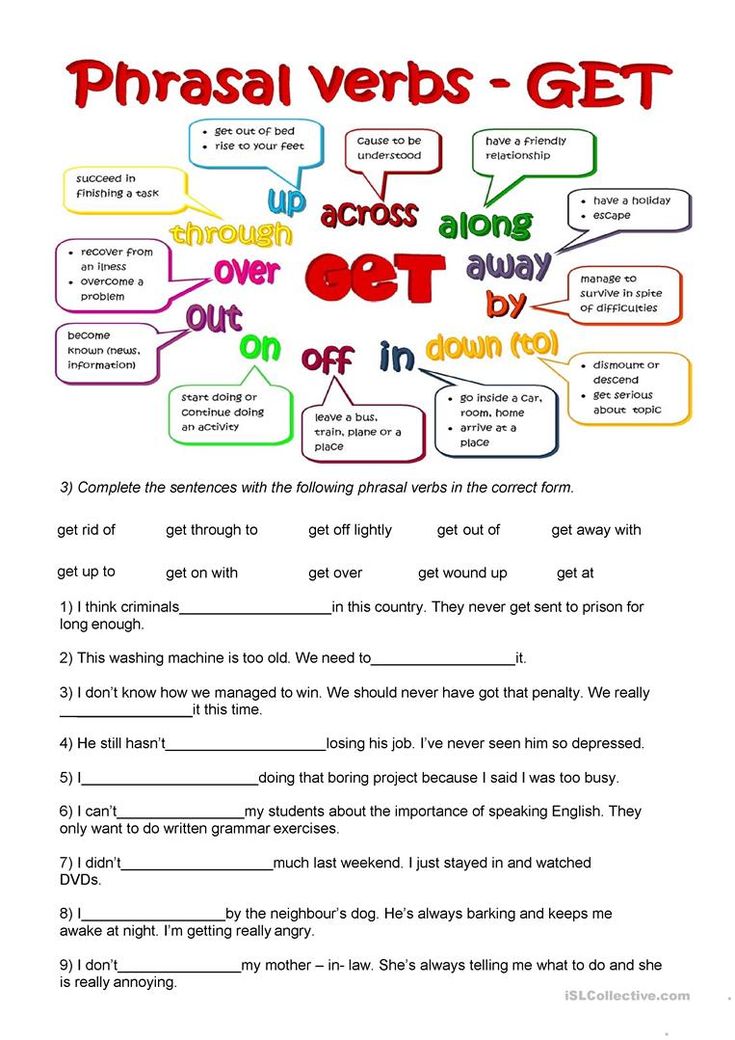
Did not conclude contracts with teachers, because I relied on their integrity and honesty. As a result, they went through training that I paid for, then went to competitors and took students away. To prevent this from happening, I needed to legally fix the training and confidentiality conditions. For example, to prescribe in the contract that the teacher is obliged to work in the studio for a certain period after completing the training or pay its cost, otherwise - a fine.
Gave the keys to the studio to all teachers. I didn't follow what the teachers were doing in the studio outside of class, and someone began to conduct classes past the cash register. Usually, an administrator works in studios, and only he has the keys: he opens and closes the studio, marks clients, and monitors subscriptions.
Made the salary too high in the city. I could save about 15,000 R per month on teachers' salaries and spend this amount more appropriately - on advertising or attracting additional teachers during the daytime and weekends.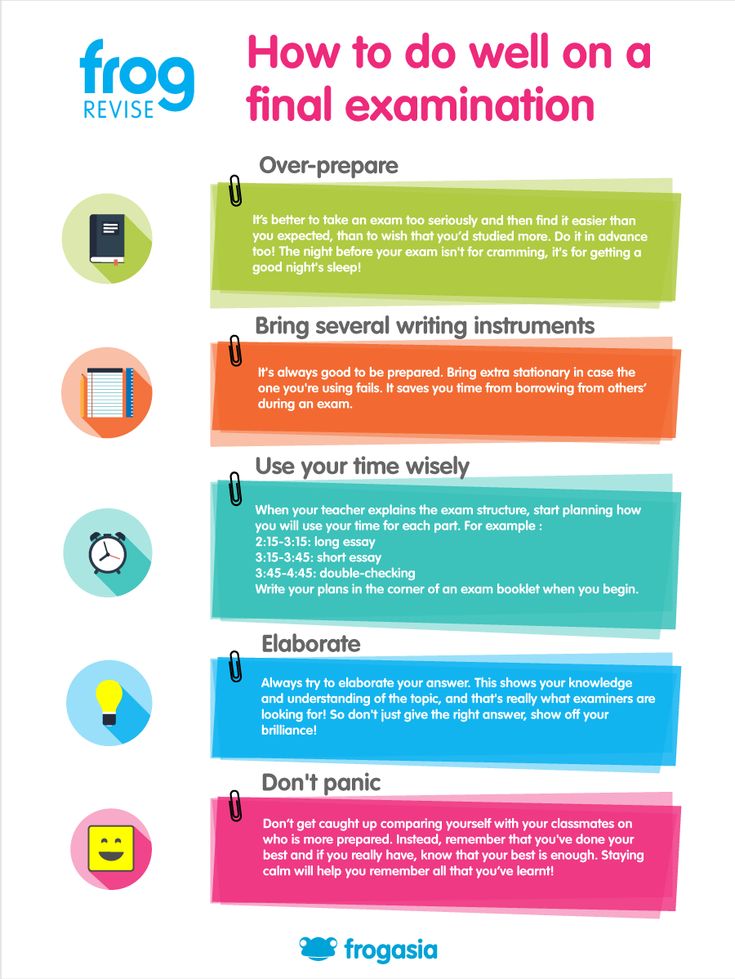
Didn't introduce strict visiting rules and didn't set up an accounting system. I went forward when the students asked to renew the subscription on credit or pay in installments. Because of this, I lost some of the money: clients went to classes, but never brought money for them, and I could forget who did not pay. If we had a CRM or other customer accounting system, these problems could have been avoided.
Irrationally used the premises. Instead of opening a second hall and teaching other dance styles, I made a dressing room and an office for employees in its place. In addition, it was possible to sublease the premises in the morning and afternoon, when there were no classes. I was offered this, but I refused. The studio could have a large sum from the evening for the sale of subscriptions, so you would have to keep track of those who rent the hall for sublease - either hire an administrator or do everything yourself. There was no worker for a nominal fee, and I didn’t have enough time.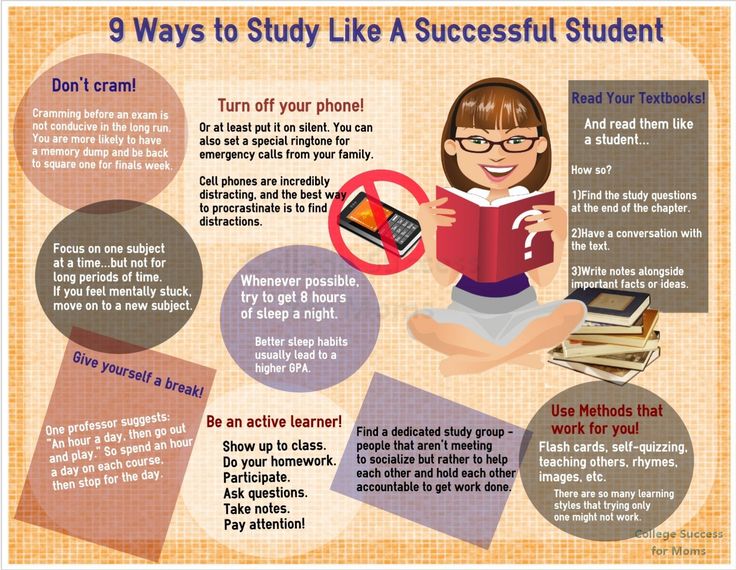
Did not use all advertising tools . It was possible to attract well-known personalities in the city for cooperation, place booklets and business cards in popular places, launch targeted advertising and more actively maintain a page on Instagram. When I reopened the studio, I no longer invited the press and did not arrange master classes, and as a result, they began to forget about the school, especially since three competitors appeared.
Made hasty decisions. The third move was unsuccessful: the studio was in an area that was difficult to reach by public transport, too much money was spent on repairs, and it was difficult to get along with the landlords. For example, they promised to install batteries for three months and started working only when I threatened to leave. All agreements with landlords had to be fixed in writing in the contract, and not limited to verbal promises.
Invested in an ad that didn't work. I spent 27,000 R on advertising on a local news site - not a single new client, not even a single call. About 4,000 R was spent on business cards. It was not possible to put them in popular places, because the owners asked for it from 5,000 R per month. And in the places where I put business cards - near familiar coffee shops and beauty salons - there was too little traffic, so this did not bring any effect.
I spent 27,000 R on advertising on a local news site - not a single new client, not even a single call. About 4,000 R was spent on business cards. It was not possible to put them in popular places, because the owners asked for it from 5,000 R per month. And in the places where I put business cards - near familiar coffee shops and beauty salons - there was too little traffic, so this did not bring any effect.
I spent another 25,000 Rs on a sign for the entrance to the studio and a banner for the competition. Both were useful only once: the sign could not be taken away when moving, and although it attracted attention, it was possible to save money on it.
where to study, salary, pros and cons
Author: Professional Guide
Updated
Another name for dance teacher is a dance school teacher or dance studio teacher. It is clear that this is the name of specialists working in a specialized company. But a teacher or dance teacher can be called not only a dance studio teacher, but also a specialist of an educational institution where dances are studied along with other subjects. By the way, the ProfGid career guidance center has recently developed an accurate career guidance test that will tell you which professions suit you, give an opinion about your personality type and intelligence. The profession is suitable for those who are interested in physical education and singing, music (see. choosing a profession based on interest in school subjects). 9Ol000 :
But a teacher or dance teacher can be called not only a dance studio teacher, but also a specialist of an educational institution where dances are studied along with other subjects. By the way, the ProfGid career guidance center has recently developed an accurate career guidance test that will tell you which professions suit you, give an opinion about your personality type and intelligence. The profession is suitable for those who are interested in physical education and singing, music (see. choosing a profession based on interest in school subjects). 9Ol000 :
Peculiarities of the profession
Some teachers prefer to work with children, others prefer to work with adults, others can work with both. In any case, the task of a dance teacher is to teach their students to move, expressing themselves in dance. However, the higher the level of teaching, the wider the scope of the teacher's activity. It is also commonly believed that the higher the titles he won, the higher his value as a teacher. Also, he often acts as a choreographer: he puts dance numbers for his students when he prepares them to perform on stage.
Also, he often acts as a choreographer: he puts dance numbers for his students when he prepares them to perform on stage.
The dance instructor may have a preference for a particular dance direction: Latin American, jazz, Irish, etc. For example, on his resume, he might write "Latin teacher" or "Jazz-modern dance teacher."
But that doesn't mean he can't do anything else. On the contrary, the profession of a dance teacher means constant learning and learning. As a spectator, he regularly goes to musicals, dance shows, competitions to watch the performances of his colleagues; attends dance workshops to learn something new for his teaching. Different dance and musical styles, teaching methods, eminent dancers and bright debutants - everything is interesting for a dance teacher.
The teacher-dancer tries himself in different genres, sometimes changes his preferences, expands his role. In a word, it is in creative search. Beauty, joy of movement and creativity are the formula that can describe this profession.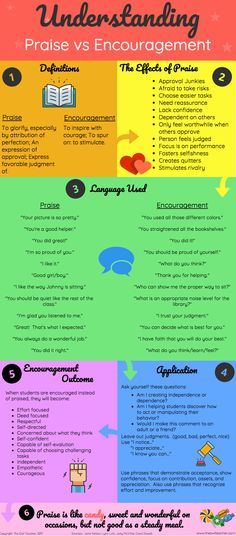
Of course, no person can perform on stage until old age. But while studying with students, the teacher maintains excellent physical shape for many years.
This is enough to be able not only to explain, but also to show the dance to his students. Even if performances and competitions are in the past, the dancer remains a dancer who knows and feels the dance from the inside.
Workplace
Dance teacher salary for November 2022
Salary information provided by hh.ru portal.
Russia 18000-70000₽
Moscow 35000-102000₽
A dance teacher can work in a dance school, studio, dance club, fitness center, comprehensive school, university, etc. Many teachers work simultaneously in different places, having time to perform and participate in dance championships. Also, a dance teacher can open his own dance school.
Read also:
Important Qualities
The profession of a dance teacher involves a love of dance, artistry, ear for music, good physical health, goodwill, patience, leadership qualities, self-confidence and optimism. He should be a sociable person, able to pick up the key to a variety of students.
He should be a sociable person, able to pick up the key to a variety of students.
Knowledge and skills
A dance teacher must be able to dance - this is understandable. But he should also know well the dance directions in which he works, including their history. Be proficient in teaching methods, be able to plan your classes. In order for dancing not to harm the health of students, the teacher needs knowledge in the field of anatomy and physiology. He must be able to competently manage physical activity.
Where to study to become a dance teacher
Most often, dance teachers become dancers who have been trained in dance since childhood. But there are other examples when already adults, having taken a great interest in dancing, reach notable heights and become teachers. Already having dance training, you can learn new directions of dance. As experts say, you can master some kind of dance style in less than six months, having worked out at a dance school.
